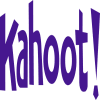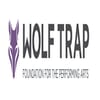Dive Brief:
- In an atmosphere of declining enrollments and multiple options, 32 Chicago schools will share $32 million in new funding to expand programming choices designed to help draw students to struggling neighborhood and magnet schools in the largest expansion of programming in the history of Chicago Public Schools, Chalkbeat reports.
- Seven of the schools are adding some form of International Baccalaureate programming, six schools are adding fine and performing arts programming, six are adding dual-language or world language programming, six are adding STEM programming, five are adding STEAM programming, and two are focusing on personalized learning. One of the new IB schools is also adding a gifted program that begins in kindergarten.
- The school district has also just released its second Annual Regional Analysis, an inventory report of schools in the district designed to help both parents and the district make planning decisions by dividing the massive school system into 16 “planning regions” and providing information about the location of schools, their attendance, their performance ratings and the programming options they offer.
Dive Insight:
Chicago Public Schools (CPS), which was labeled the worst school district in the nation 30 years ago, was cited in a 2017 Stanford University study as one of the leaders in academic growth. The third-largest school district in the nation, the district includes more charter schools and magnet schools than most of its peers — a factor some say has spurred its academic improvement. CPS Chief Education Officer Janice Jackson also attributes the improvement to increased accountability, data-driven decision-making and greater principal autonomy than in the past.
However, the wide range of school options has created challenges for the district. Its popular selective-enrollment schools have been controversial, and some studies suggest these types of schools don’t provide as much academic benefit as expected. The wide array of programming at charter and magnet schools has also drawn the majority of students in the city away from their neighborhood schools. Part of the reasoning behind the massive programming expansion is to provide more options that draw students back to those schools, as these institutions have been shown to play a vital role as hubs that support the health and economic stability of their communities.
Most school districts don’t have the option of providing the wide range of programming choices that Chicago can. The city’s dense population center, numerous institutions of higher learning, and mass transit system provides advantages in this arena that most school districts lack. But smaller school districts can take note of the popular programming choices that have emerged in this expansion.
Rigorous programs such as the International Baccalaureate program are the most popular option as schools bank on the growth of more academically-centered selective-enrollment schools as a guide. STEM programming, which focuses on science, technology, engineering and math, is another popular option as it has been pushed as a means of preparing students for a wide range of jobs in a rapidly changing economy. Fine and Performing Arts programming is also thriving in the arts-rich Chicago area, though this programming may be more difficult to implement in rural and suburban locations. STEAM programming, meanwhile, aims to provide the best of both worlds by infusing STEM programming with an arts component.
All of these options allow students to explore interests more closely aligned to their own and develop more well-rounded interests that can prepare them for future careers that may not yet exist. The expansion of programming, such as the IB schools and those offering expanded language options, also provides students who can't get into selective-enrollment schools for various reasons the option to pursue more rigorous learning opportunities that can benefit them as they pursue college and career options.






 Dive Awards
Dive Awards








